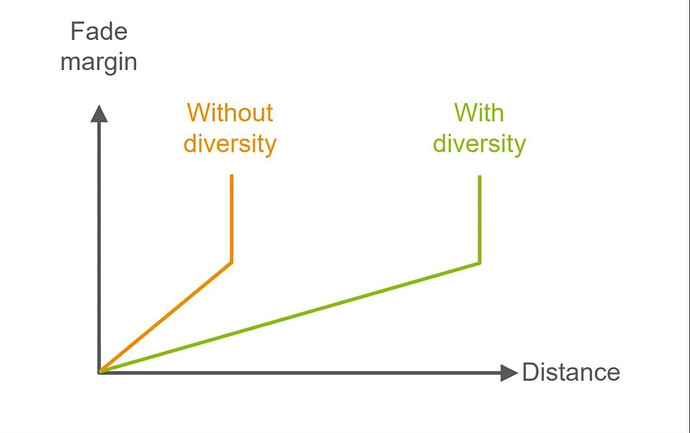-
Diversity is a Way to improve the microwave Link performance
-
There’s multiple types of diversity , common types are :
- Space diversity
- Frequency diversity
-
Theory of diversity is to receive the signal at the Rx side in 2 frequency channels or through 2 different antennas
-
Diversity aims to improve the performance because the 2 signals received could have different BER or signal strength and different performance
-
We use diversity to solve the fading issues
-
We have mainly 2 types of Fading :
- Multipath fading
- Rain fading
-
Multipath fading is focused with low frequency channels like 3-15 GHz
-
Rain fading is effective in high frequency range 15-80 GHz
-
From 13-18 GHz microwave Links expect both fading types
-
We can increase the fade margin by using these 2 factors :
- Using vertical polarization
- Use lower modulation
-
Drawback from using lower modulation :
- decreasing the system capacity/ throughput
-
Drawbacks from using diversity :
- increasing the system cost since we have to use 2 antennas , or 2 different channels
LinkedIn: ![]()
